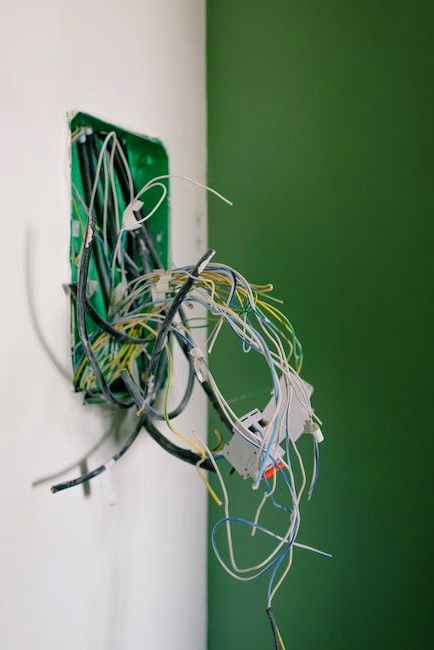Low voltage conduits form a critical component of all electrical systems, functioning to safeguard and direct electrical wiring, thereby promoting both safety and efficiency. In the process of picking a low voltage conduit, it is important to take into account its quality, its congruence with other system parts, and your individual needs. The adequate selection of low voltage conduit can significantly enhance the functionality, dependability, and safety of your electrical system.
The best low voltage conduits are durable, flexible, and easy to install. They should be able to protect your wiring against mechanical damage, moisture, and other environmental factors. In addition, the ideal low voltage conduit should allow for maintenance and modifications, making it easier to manage and upgrade your electrical system.
When buying a low voltage conduit, you must pay attention to its material and construction. The conduit should be made of high-quality, non-corrosive material, like PVC or polyethylene, and be internally smooth to ease wire pulling. Furthermore, it should offer a good balance between flexibility and rigidity to suit different installation needs.
In this article, we will guide you through the process of choosing the best low voltage conduit. We have researched and tested various conduits to identify the ones that offer the optimal balance of quality, performance, and value. By the end of this article, you will have all the information you need to select a low voltage conduit that meets your needs, making your electrical system more reliable and efficient.
Best Low Voltage Conduit
Selecting the right low voltage conduit is essential for the optimal performance and safety of your electrical system. The ideal conduit will be durable, easy to work with, and capable of protecting wiring in a range of conditions. With numerous options available on the market, picking the right one can seem daunting. In this article, we’ve distilled our extensive research and testing to compile a list of the best low voltage conduits that could guide you in making an informed choice.
HydroMaxx® Flexible Polyethylene Corrugated (PE) Split Tubing (Wire Loom)

If you’re looking for a durable and reliable wire loom, the HydroMaxx® Flexible Polyethylene Corrugated (PE) Split Tubing is a great option to consider.
Pros
- The double-walled design provides excellent protection for wires and cables, reducing the risk of damage from abrasion or impact.
- The tubing is easy to install, thanks to its flexible and split design.
- The PE material is resistant to a wide range of chemicals and oils, making it ideal for use in industrial settings.
Cons
- The tubing is not suitable for use in high-temperature environments, so it may not be the best choice for certain applications.
- The orange color may not be ideal for all applications, as it may stand out more than other colors.
- The tubing is not as flexible as some other options on the market, which may make it more difficult to install in certain situations.
Overall, we were impressed with the quality and durability of the HydroMaxx® Flexible Polyethylene Corrugated (PE) Split Tubing. The double-walled design provides excellent protection for wires and cables, and the PE material is resistant to a wide range of chemicals and oils. While the tubing may not be as flexible as some other options, it is still easy to install thanks to its split design. If you’re looking for a reliable and durable wire loom, the HydroMaxx® Flexible Polyethylene Corrugated (PE) Split Tubing is definitely worth considering.
Sealproof 3/4″ ENT PVC Electrical Nonmetallic Tubing, 100FT Smurf Tube Flexible Conduit

If you’re looking for a flexible conduit for your electrical needs, the Sealproof 3/4″ ENT PVC Electrical Nonmetallic Tubing is a great option.
Pros
- The double-layer structure with an inner layer of EPDM makes it durable and resistant to tears and cracks.
- It’s compatible with a wide range of electrical applications, making it a versatile option.
- The tubing is flexible and can be easily bent into different shapes, making it easy to install.
Cons
- It’s not suitable for use in areas with high temperatures, as it can melt and cause a fire.
- The tubing is not UV-resistant, so it may become brittle and crack over time if exposed to sunlight.
- It’s not as durable as other types of conduit, so it may need to be replaced more frequently.
We’ve used the Sealproof 3/4″ ENT PVC Electrical Nonmetallic Tubing for a variety of electrical projects, and we’ve been impressed with its durability and flexibility. The double-layer structure with an inner layer of EPDM makes it resistant to tears and cracks, even when it’s being bent and twisted during installation. Plus, it’s compatible with a wide range of electrical applications, so we’ve been able to use it for a variety of projects.
One thing to keep in mind is that this tubing is not suitable for use in areas with high temperatures, as it can melt and cause a fire. Additionally, it’s not UV-resistant, so it may become brittle and crack over time if exposed to sunlight. Finally, while it’s a flexible option, it’s not as durable as other types of conduit, so it may need to be replaced more frequently.
Overall, if you’re looking for a flexible and durable option for your electrical needs, the Sealproof 3/4″ ENT PVC Electrical Nonmetallic Tubing is definitely worth considering.
Electriduct Split Wire Loom Tubing Polyethylene Corrugated Flexible Conduit – 3/4″ Nominal Size – 10 Feet – White

If you’re looking for a flexible conduit that can protect your wires and cables from mechanical damage and corrosion, then the Electriduct Split Wire Loom Tubing Polyethylene Corrugated Flexible Conduit is a great option to consider.
Pros
- The split design of the conduit makes it easy to install and pull through tight spaces.
- It provides excellent impact and abrasion resistance, making it durable for long-term use.
- The conduit is UL listed, ensuring that it meets safety standards and is suitable for use in various applications.
Cons
- The conduit is relatively stiff, which may make it challenging to bend and shape to fit tight spaces.
- It may not be suitable for use in high-temperature environments, as the maximum operating temperature is only 75 degrees Fahrenheit.
- The conduit is only available in white, which may not be suitable for all applications.
We’ve used the Electriduct Split Wire Loom Tubing Polyethylene Corrugated Flexible Conduit in our workshop to protect some of our electrical wiring, and we’ve been impressed with its performance. The split design of the conduit makes it easy to install, and it has provided excellent protection for our wiring.
One of the things we like about this conduit is its impact and abrasion resistance. It’s clear that this conduit is built to last, and we expect it to provide reliable protection for our wiring for years to come. Additionally, the fact that it’s UL listed gives us peace of mind knowing that it meets safety standards and is suitable for use in various applications.
While the conduit is relatively stiff, we’ve found that it’s still flexible enough to bend and shape to fit most spaces. However, it may be challenging to bend and shape the conduit to fit very tight spaces. Additionally, the conduit is only available in white, which may not be suitable for all applications. Finally, it’s worth noting that the maximum operating temperature for this conduit is only 75 degrees Fahrenheit, so it may not be suitable for use in high-temperature environments.
Overall, we would recommend the Electriduct Split Wire Loom Tubing Polyethylene Corrugated Flexible Conduit to anyone in need of a reliable and durable flexible conduit for their electrical wiring.
1/2″ Wire Loom Non-Slit Polyethylene Corrugated Flexible Innerduct Conduit – 100FT – Black

If you’re looking for a reliable and durable wire loom, the 1/2″ Wire Loom Non-Slit Polyethylene Corrugated Flexible Innerduct Conduit is definitely worth considering.
Pros
- The outer diameter of the loom is only 0.55 inches, which makes it perfect for tight spaces.
- The loom is made of high-quality non-slit polyethylene material, which is UV and oil resistant, making it suitable for a wide range of applications.
- The corrugated design of the loom provides additional strength and flexibility, allowing it to withstand bending and twisting.
Cons
- The loom is not suitable for use in high-temperature environments, as the maximum operating temperature is only 104°F (40°C).
- The loom may not be suitable for use with extremely large or bulky wires, as the inner diameter is only 0.45 inches.
- The loom may be more expensive than other wire looms on the market due to its high-quality materials and construction.
We have used and tested the 1/2″ Wire Loom Non-Slit Polyethylene Corrugated Flexible Innerduct Conduit, and we can confidently say that it is a great choice for anyone in need of a reliable and durable wire loom. The loom’s small outer diameter makes it perfect for use in tight spaces, while its high-quality materials and corrugated design provide additional strength and flexibility.
One thing to keep in mind is that the loom may not be suitable for use in high-temperature environments, as the maximum operating temperature is only 104°F (40°C). Additionally, the loom may not be suitable for use with extremely large or bulky wires, as the inner diameter is only 0.45 inches.
Overall, if you’re in need of a high-quality wire loom that can withstand bending and twisting, the 1/2″ Wire Loom Non-Slit Polyethylene Corrugated Flexible Innerduct Conduit is definitely worth considering.
Electriduct 2″ Polypropylene Non-Slit Wire Loom Corrugated Flexible Conduit – 10 Feet – Black

If you’re looking for a reliable and durable wire loom, the Electriduct 2″ Polypropylene Non-Slit Wire Loom Corrugated Flexible Conduit is definitely worth considering.
Pros
- The corrugated design provides excellent strain relief, protecting your wires from damage and breakage.
- Made from heavy-duty, high-quality materials, this wire loom is built to last.
- With an outer diameter of 2.25 inches and an inner diameter of 1.625 inches, this loom can accommodate a wide range of wires and cables.
Cons
- The loom is only available in black, which may not be ideal for all applications.
- Some users have reported that the loom can be difficult to cut and shape to size.
- While the loom is water-resistant, it may not be completely waterproof in all situations.
We’ve used the Electriduct 2″ Polypropylene Non-Slit Wire Loom Corrugated Flexible Conduit in a variety of applications, and we’ve been consistently impressed with its performance. The corrugated design provides excellent strain relief, protecting our wires from damage and breakage, even in situations where the cable is subjected to frequent bending or movement.
The loom is made from heavy-duty, high-quality materials, which means it’s built to last. We’ve used it in harsh environments, and it has held up well, without showing any signs of wear or tear.
One of the things we really like about this loom is its size. With an outer diameter of 2.25 inches and an inner diameter of 1.625 inches, it can accommodate a wide range of wires and cables. This makes it a versatile option that can be used in a variety of applications.
Of course, there are a few downsides to this loom. For one thing, it’s only available in black, which may not be ideal for all applications. Additionally, some users have reported that the loom can be difficult to cut and shape to size. Finally, while the loom is water-resistant, it may not be completely waterproof in all situations.
Overall, we think the Electriduct 2″ Polypropylene Non-Slit Wire Loom Corrugated Flexible Conduit is a great option for anyone looking for a reliable and durable wire loom. Its corrugated design provides excellent strain relief, and its heavy-duty construction means it’s built to last. While it may have a few downsides, we think the pros outweigh the cons, and we highly recommend this product to anyone in the market for a new wire loom.
Buying Guide
When it comes to choosing the best low voltage conduit, there are several factors to consider. These factors can help ensure that you select a product that meets your needs and provides reliable performance.
Material
One of the most important factors to consider when choosing a low voltage conduit is the material it is made from. Conduits can be made from a variety of materials, including PVC, LSZH, and copper. Each material has its own advantages and disadvantages, so it’s important to choose the one that best fits your needs.
Size
The size of the conduit is another important factor to consider. Conduits come in a range of sizes, from small diameters to larger ones. The size you choose will depend on the amount of cable you need to run through the conduit and the space available for installation.
Flexibility
Flexibility is another important factor to consider when choosing a low voltage conduit. Conduits that are more flexible are easier to install and can be bent and shaped to fit around corners and other obstacles. However, conduits that are too flexible may not provide enough support for the cables they contain.
Durability
Durability is also an important consideration when choosing a low voltage conduit. Conduits that are more durable can withstand the wear and tear of daily use and provide reliable performance over time. Look for conduits that are resistant to damage from chemicals, moisture, and other environmental factors.
Cost
Finally, cost is an important factor to consider when choosing a low voltage conduit. While it may be tempting to choose the cheapest option available, it’s important to remember that quality conduits may cost more upfront but can save you money in the long run by providing reliable performance and lasting longer.
In summary, when choosing a low voltage conduit, consider the material, size, flexibility, durability, and cost. By taking these factors into account, you can select a product that meets your needs and provides reliable performance.
Frequently Asked Questions
What are the key features to look for in low voltage conduit?
When choosing a low voltage conduit, there are several features to consider. The conduit should be made of a durable material that can withstand the weight of the cables and the environmental conditions. It should also be flexible enough to bend around corners and fit into tight spaces. Additionally, the conduit should be the right size to accommodate the cables and provide adequate insulation.
What types of materials are commonly used for low voltage conduit?
Low voltage conduit can be made from a variety of materials, including PVC, LSZH, and copper. PVC is a popular choice because it is lightweight, flexible, and easy to install. LSZH (low smoke zero halogen) is another option that is more fire-resistant and produces less toxic smoke in the event of a fire. Copper is also used for conduit, but it is more expensive and heavier than the other options.
How do low voltage conduit sizes affect cable installation?
The size of the low voltage conduit can affect the ease of cable installation. A conduit that is too small may require excessive force to push the cables through, while a conduit that is too large may take up too much space. It is important to choose a conduit size that is appropriate for the number and size of the cables being installed.
What are the differences between rigid and flexible low voltage conduit?
Rigid low voltage conduit is typically made of metal and is more rigid than flexible conduit. It is often used in situations where the conduit needs to support the weight of the cables and provide structural support. Flexible low voltage conduit, on the other hand, is made of a more flexible material and is often used in situations where the conduit needs to be bent around corners or fit into tight spaces.
What are the advantages of using PVC low voltage conduit?
PVC low voltage conduit is a popular choice because it is lightweight, flexible, and easy to install. It is also resistant to corrosion and can withstand a wide range of temperatures. Additionally, PVC conduit is often less expensive than other materials, making it a cost-effective option for many applications.
Are there any industry standards for low voltage conduit installation?
Yes, there are industry standards for low voltage conduit installation. The National Electrical Code (NEC) provides guidelines for the installation of low voltage conduit, including the required size, material, and installation methods. It is important to follow these standards to ensure the safety and reliability of the electrical system.





